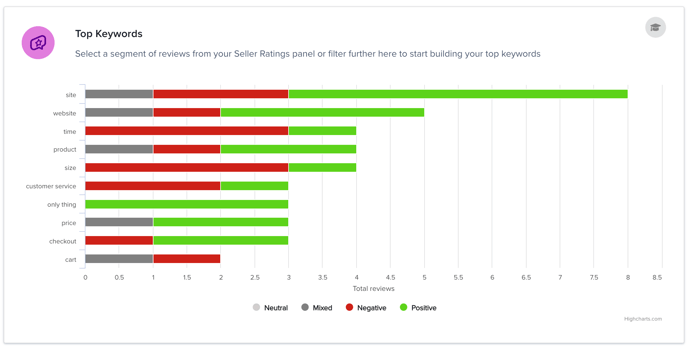Sentiment Analytics - Understanding the Top Keywords Report
Let's quickly examine how top keywords can help you figure out what's going on. Keyword Frequency & Sentiment

Let's consider an example of an e-commerce store that sells fitness apparel. Here's how you can use a top keywords report with positive and negative sentiment:
-
Identify positive keywords
-
In the top keywords report, you find that customers frequently mention words like "comfortable," "durable," "stylish," and "high-quality" when expressing positive sentiments about your fitness apparel.
-
These keywords indicate that customers appreciate your products' comfort, durability, style, and quality. It may be useful to double down on these aspects, further research them, or highlight them specifically on your product pages.
-
Identify negative keywords
-
-
Upon reviewing the negative sentiment keywords, you find that customers often mention words like "sizing," "fit," and "customer service" in their feedback.
-
This indicates potential pain points related to sizing issues, fit problems, or unsatisfactory customer service experiences.
-
Keyword Cloud
A keyword cloud, a word cloud, or tag cloud, visually represents the importance or frequency of words in a text by displaying them in varying font sizes or colors. Here are a few reasons why a keyword cloud can be advantageous over a simple keyword frequency list:
-
Visual representation: The size or color of each word in the cloud corresponds to its frequency or significance. This visual format makes it easier to quickly grasp the most prominent or frequently mentioned keywords.
Sentiment Trend Chart
The sentiment trend chart maps the sentiment for the particular set of reviews over time. It can tell you what the trends are over a particular time and, most importantly, highlights if you are improving, or have hit a spike or a valley in particular keywords.